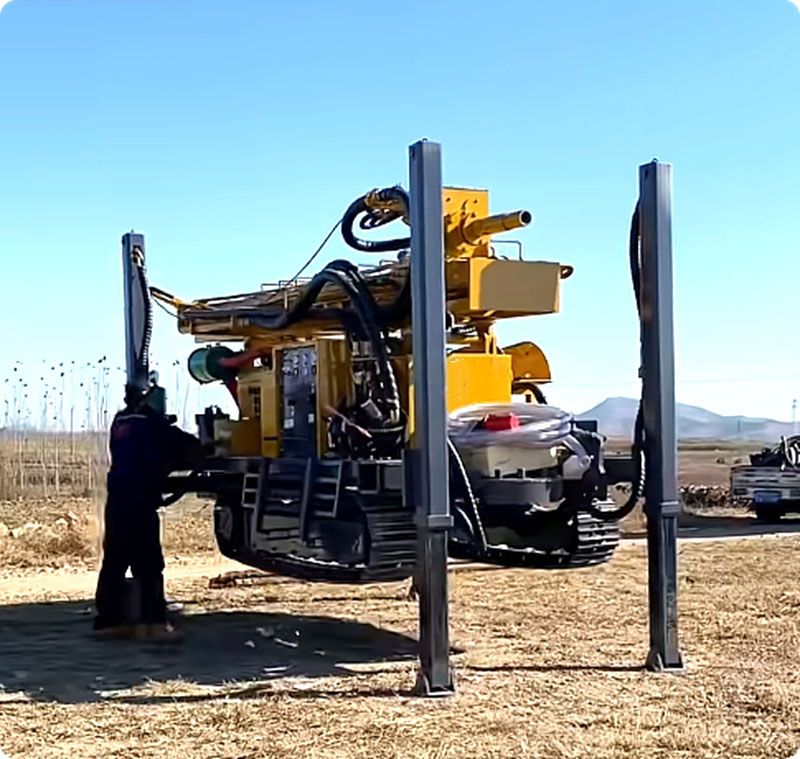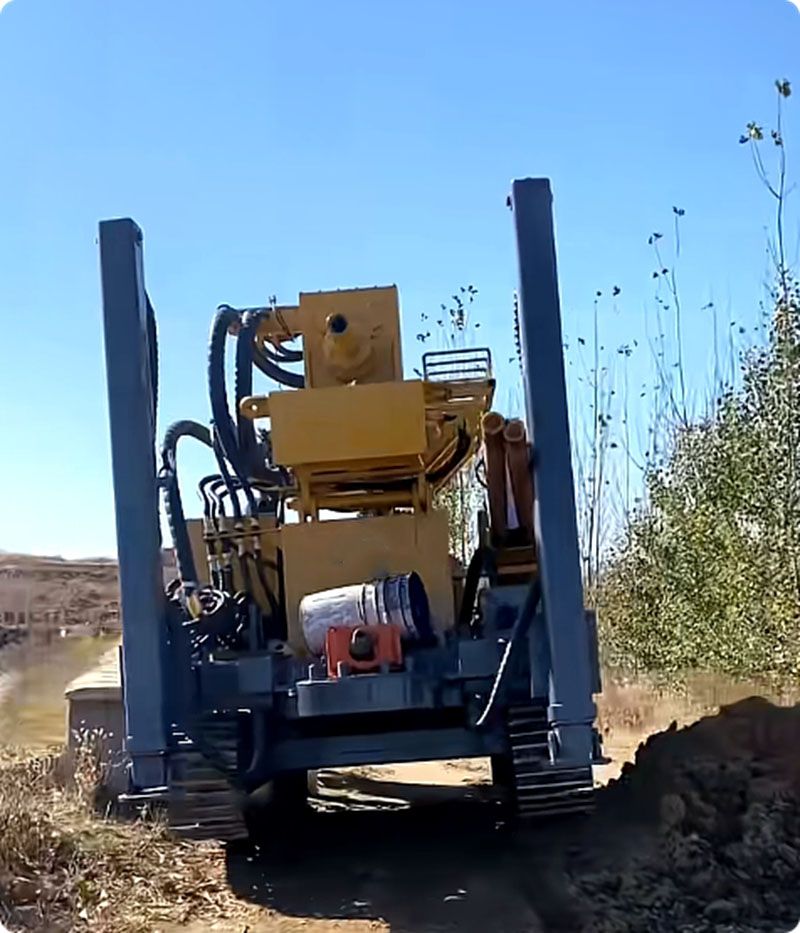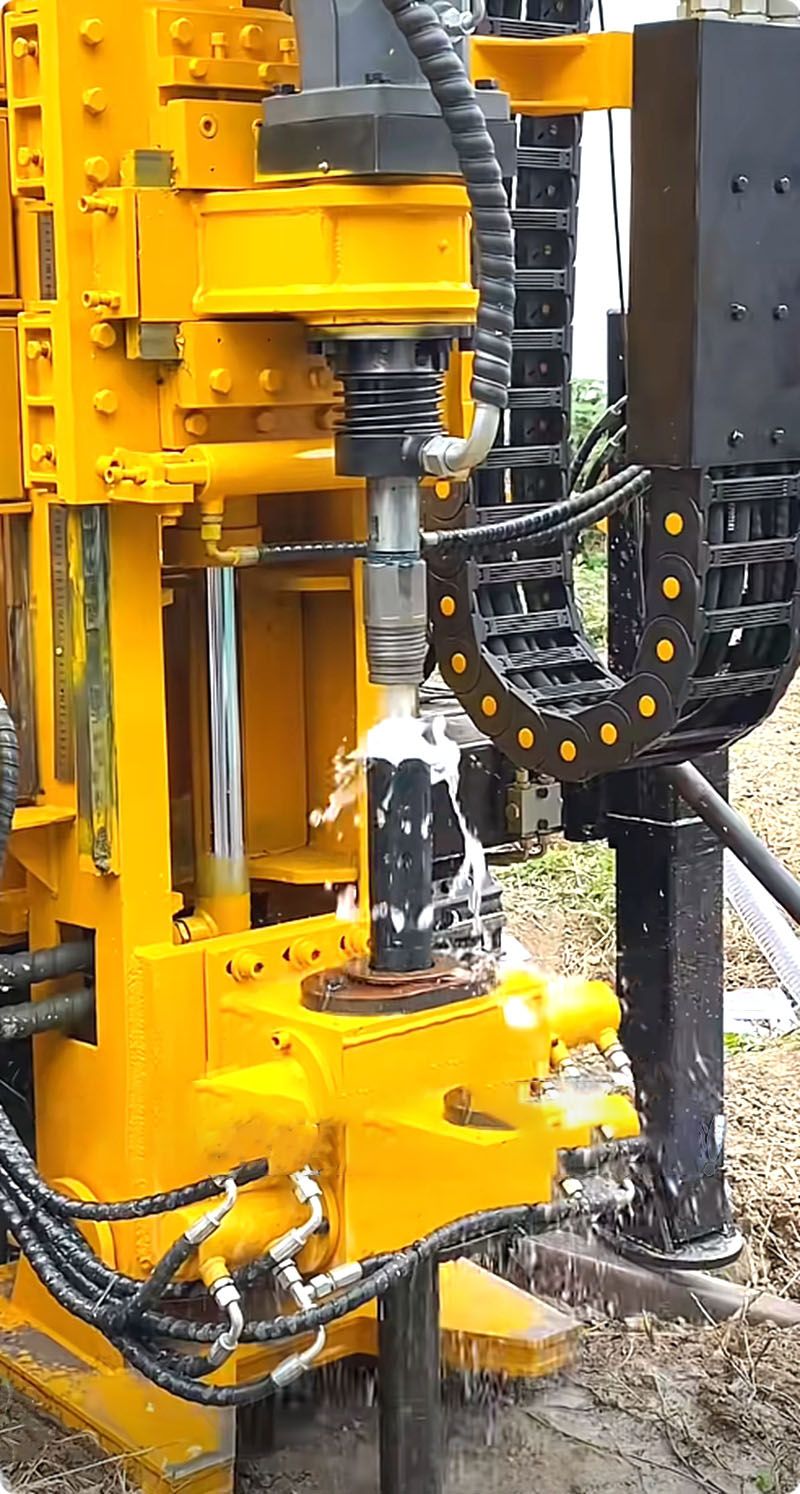Saline-Groundwater Adaptation: Water Well Drilling Rigs for Coastal Arid Rocky Regions
1 The Salinity Crisis in Coastal Arid Mines
Coastal arid rocky regions—such as Saudi Arabia's Eastern Province, Australia's Western Australia coast, and Chile's Atacama Coast—face a unique challenge: groundwater is often saline (saltwater), making it unusable for drinking, agriculture, or mining. Traditional water well drilling rig can't filter salt during drilling, and separate desalination adds $100,000+ in costs. The water well drilling rig designed for saline groundwater solves this—integrated with a downhole filtration system, it drills deep boreholes in rocky arid terrain while removing salt, delivering fresh water directly from saline aquifers.
2 Integrated Downhole Filtration: Drilling & Desalinating in One Step
The deep water well drill's core innovation is a ceramic membrane filtration system mounted at the drill bit. As the rig drills through rocky formations, the membrane filters salt and minerals from groundwater, with a 99% salt rejection rate. A Saudi Arabian mining camp tested this water well drilling rig and found it produced fresh water (less than 500 ppm salt) from a saline aquifer (10,000 ppm salt)—no separate desalination needed.
The filtration system is self-cleaning: drill rotation scrubs the membrane, preventing clogging from rock particles. The system can be adjusted for different salinity levels, from slightly brackish (1,000 ppm) to highly saline (20,000 ppm). An Australian coastal farm reported that the rig adapted seamlessly to two aquifers—one with 3,000 ppm salt and one with 15,000 ppm—producing fresh water from both.
3 Rocky Terrain Drilling Power: Penetrating Coastal Hard Rock
Coastal arid regions have hard rock formations (limestone, basalt) mixed with sandstone, requiring powerful drilling. The rocky terrain drilling rig uses a hydraulic hammer that delivers 1,800 psi of impact force, drilling through 35cm of limestone per hour. The drill bits are diamond-tipped, designed to withstand the abrasion of coastal rock (which often contains coral fragments).
A Chilean Atacama Coast community used the rig to drill a 180-meter borehole through limestone and basalt, reaching a saline aquifer. The integrated filtration system turned the saltwater into fresh water, supplying 500 residents with 10,000 liters daily. "We tried a traditional rig before—it drilled the hole, but the water was undrinkable," said a community leader. "This water well drilling rig gave us usable water in one step."
4 Arid-Coastal Durability: Resisting Salt Corrosion
Coastal air and saline groundwater accelerate corrosion, so the water well drilling rig uses corrosion-resistant materials. The drill string is made of stainless steel, the frame is galvanized, and all electrical components are sealed to prevent saltwater ingress. The filtration system's ceramic membrane is resistant to salt buildup, lasting 2 years before replacement.
A Saudi Arabian mining camp reported that the rig showed no corrosion after 12 months of coastal operation—compared to traditional rigs that rusted through in 6 months. The drill bits' diamond coating also resisted salt-induced wear, lasting 3x longer than standard bits.
5 Water-Saving Design for Arid Coasts
Arid coastal regions have no surface water to waste, so the water well drilling rig uses a closed-loop drilling fluid system that recycles 98% of the mud. The fluid is a salt-resistant polymer that doesn't contaminate saline aquifers. The Saudi mining camp used just 800 liters of water to drill a 200-meter well—compared to 8,000 liters with a traditional rig.
For regions with no surface water, the rig can use seawater as drilling fluid (with the integrated filter removing salt before reuse). An Australian coastal farm tested this, using 500 liters of seawater to drill a 150-meter well—no fresh water required.
6 Transforming Coastal Arid Water Access
The water well drilling rig's saline adaptation has changed coastal arid regions. The Saudi mining camp eliminated desalination costs of $120,000 annually and now has a reliable fresh water supply for 200 workers. The Australian farm irrigates 5 hectares of crops with filtered groundwater, increasing annual revenue by $40,000. The Chilean community reduced water collection time from 3 hours daily to 10 minutes, improving quality of life.
For coastal arid rocky regions, the water well drilling rig isn't just a machine—it's a solution to the dual curse of aridity and salinity, turning unusable groundwater into a life-sustaining resource.







